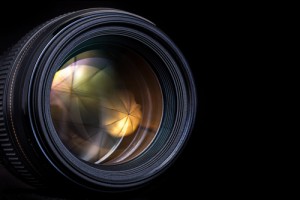Ruling on dental photographs takes a bite out of copyright protections
With such a low threshold, surely Pohl’s photos of his patient’s teeth surpass it, says Rothman. “I think it is stunning in its conclusion” that the images are not copyrightable, Rothman says. “The judge looked at the picture, and that was it. And that doesn’t consider the photographer’s art, and it is an art.”
But Nelles, who defended the website marketer against the infringement claim, says the Feist decision helps his argument more than the dentist’s. Simply aiming a point-and-shoot camera at someone’s mouth isn’t artistry, Nelles says. He compared the side-by-side teeth images to hypothetical photos of an old car fixed up for sale. “It’s almost routine,” he says. “Stand in front of the car; take a picture.”
Setting boundaries
As for whether the ruling brings too much subjectivity into the realm of photo copyrights, Nelles says this area of the law has always been subjective. With the Florida ruling, there’s now a little more clarity. “The line had to be drawn somewhere,” he says.
Attorney Joshua L. Simmons, a copyright expert and partner at Kirkland & Ellis in New York City, says he wasn’t surprised by the ruling, considering Pohl couldn’t remember some of the details of the photo shoots, such as whether the patient was sitting or standing or what type of camera was used.
Various courts have been trying to figure out how far copyright protection extends. This ruling says that to obtain copyrights, photographers must be able to demonstrate at least some tiny way that their photos are creative, Simmons says.
That can be done by adjusting the camera angle, lighting, exposure or other technical aspects or carefully staging the subject. All that’s needed is “a modicum of creativity” under the Supreme Court’s Feist decision. That’s not much, Simmons says, “but you have to have some.”
But attorney Roberta Jacobs-Meadway, an intellectual property expert at BakerHostetler in Philadel-phia, says the judge got the ruling “seriously wrong.”
The ruling seems to confuse the concept of “originality”—meaning a work was created as opposed to copied—with the concept of artistic creativity, Jacobs-Meadway says.
Whether an image is used commercially shouldn’t matter. “A lot of copyrighted work is utilitarian. Fabric patterns are utilitarian,” she says.
To say the photos’ utilitarian use makes them not copyrightable “is a radical interpretation of the copyright law,” Jacobs-Meadway says.
Jonathan S. Masur, a professor at the University of Chicago Law School and an expert in copyright issues, agrees the judge got it right but says he doesn’t expect the ruling will have a huge effect.
Photographers may have to adjust their behaviors a bit, knowing they might have to prove they staged their lighting or planned a pose. But Masur says that isn’t tough to do. “You have to add some very small element of creativity to it,’’ he says.
As for what the ruling means for consumers who might find out the photos they see in ads have nothing to with the businesses that post them, the old phrase “caveat emptor” comes to mind.
Masur says the dentist’s case was rightly brought for copyright infringement and not deceptive business practices.
That said, a consumer might have a decent case for fraud if they ended up using a terrible dentist solely because of a copied image, Masur says.
“The consumer always has the option of suing for false or deceptive practices,” he says.
Simmons says consumers should probably think twice when they see before-and-after photos.
“This decision certainly has brought to the forefront that not everything you see online is going to be what you think it is,” Simmons says.
This article was published in the December 2018 ABA Journal magazine with the title "Pulling teeth: Florida ruling on dental photographs takes a bite out of copyright protections."



